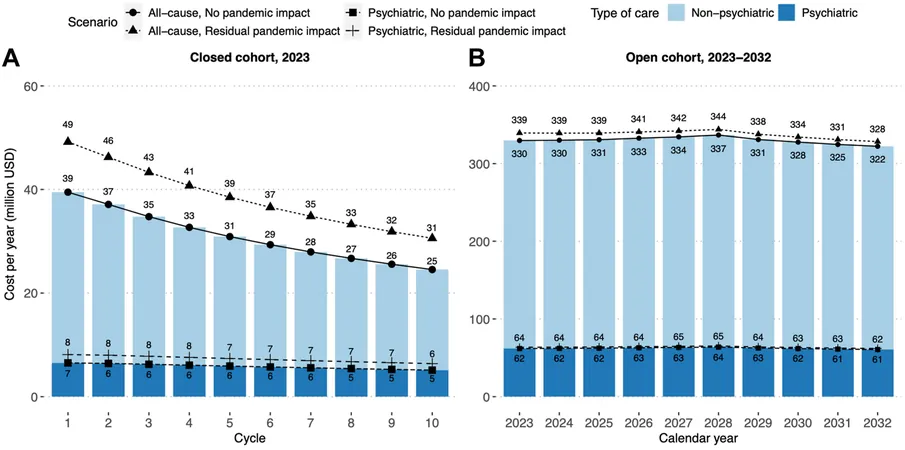
Alarming Rise: Global Diabetes Rate Has Doubled in Just 30 Years!
2024-11-15
Author: Jia
Alarming Rise: Global Diabetes Rate Has Doubled in Just 30 Years!
In a shocking revelation, a new analysis published in *The Lancet* journal indicates that the global diabetes rate has dramatically doubled over the last three decades. While only 7% of adults worldwide were diagnosed with diabetes in 1990, this figure reached a staggering 14% in 2022. With the continuous growth of the global population, it is estimated that over 800 million people currently live with diabetes, an alarming increase from less than 200 million in 1990.
The analysis accounted for both major types of diabetes: Type 1 and Type 2. Type 1 diabetes, which typically presents itself in childhood and stems from an insulin deficiency, is notably more challenging to manage. In contrast, Type 2 diabetes primarily affects middle-aged and older individuals, who gradually lose their sensitivity to insulin.
Curiously, the impact of this health crisis varies significantly by country. Wealthier nations, including Japan, Canada, and several Western European countries such as France and Denmark, have managed to keep their diabetes rates stable or even see a decline. However, this bright spot is overshadowed by the alarming trend in low to middle-income countries, where the brunt of untreated diabetes cases is increasingly felt.
Take Pakistan as an example: Nearly one-third of women there are now diabetic, a drastic increase from less than 10% just three decades ago. The study highlights obesity as a primary driver of Type 2 diabetes, emphasizing the role of unhealthy diets in this epidemic.
The research also sheds light on a growing disparity in diabetes treatment between richer and poorer nations. Approximately three out of five adults over 30 with diabetes—around 445 million people—did not receive treatment in 2022, with India being home to nearly a third of that figure. In sub-Saharan Africa, grim statistics reveal that only 5-10% of diabetic adults received any form of treatment last year, underscoring a critical healthcare gap.
While some developing countries, such as Mexico, are making strides in treating their diabetic populations, the overall inequalities are growing more pronounced, raising urgent concerns about the future.
"The youth population affected by diabetes in low-income countries is particularly alarming, as their lack of access to effective treatment puts them at risk for lifelong complications," warned Majid Ezzati, senior author of the study from Imperial College London. These complications can range from amputations to heart disease, kidney damage, vision loss, and even premature death.
This startling trend demands immediate global action and innovative healthcare solutions to bridge the growing divide in diabetes care and tackle this escalating public health crisis. As we veer into a future where diabetes could become an even greater burden, we must urgently rethink our strategies to promote health and prevent diabetes across the globe.




 Brasil (PT)
Brasil (PT)
 Canada (EN)
Canada (EN)
 Chile (ES)
Chile (ES)
 España (ES)
España (ES)
 France (FR)
France (FR)
 Hong Kong (EN)
Hong Kong (EN)
 Italia (IT)
Italia (IT)
 日本 (JA)
日本 (JA)
 Magyarország (HU)
Magyarország (HU)
 Norge (NO)
Norge (NO)
 Polska (PL)
Polska (PL)
 Schweiz (DE)
Schweiz (DE)
 Singapore (EN)
Singapore (EN)
 Sverige (SV)
Sverige (SV)
 Suomi (FI)
Suomi (FI)
 Türkiye (TR)
Türkiye (TR)